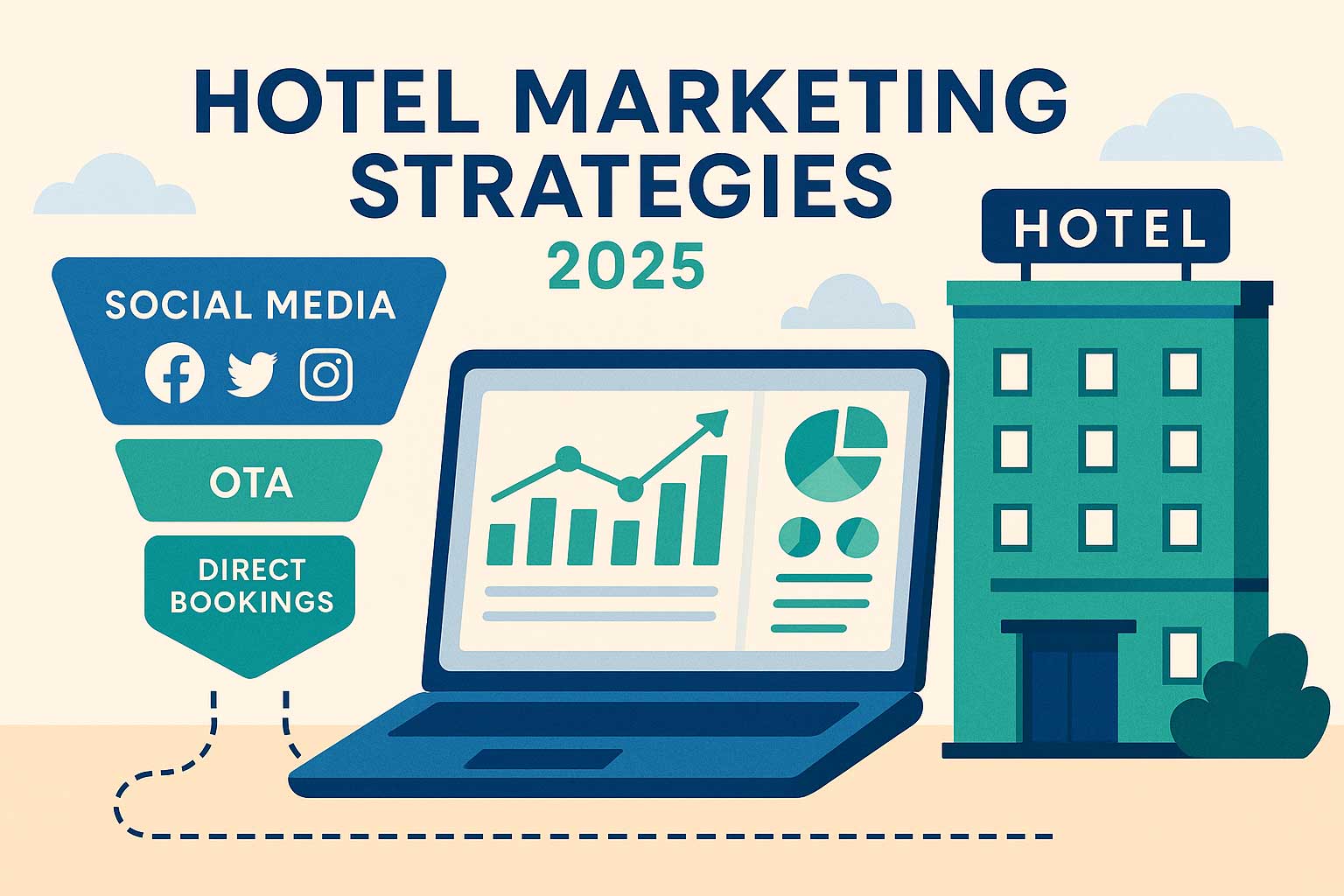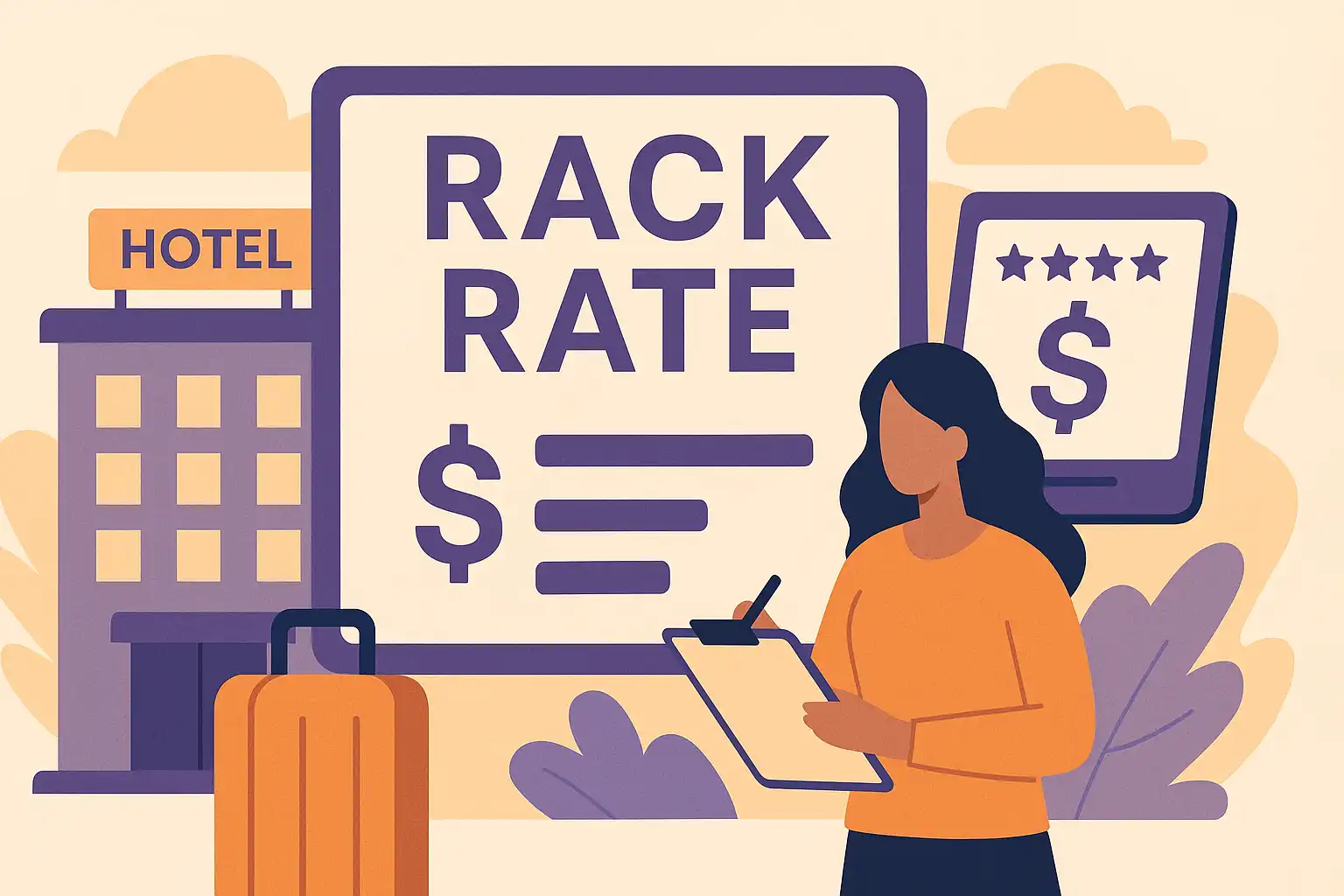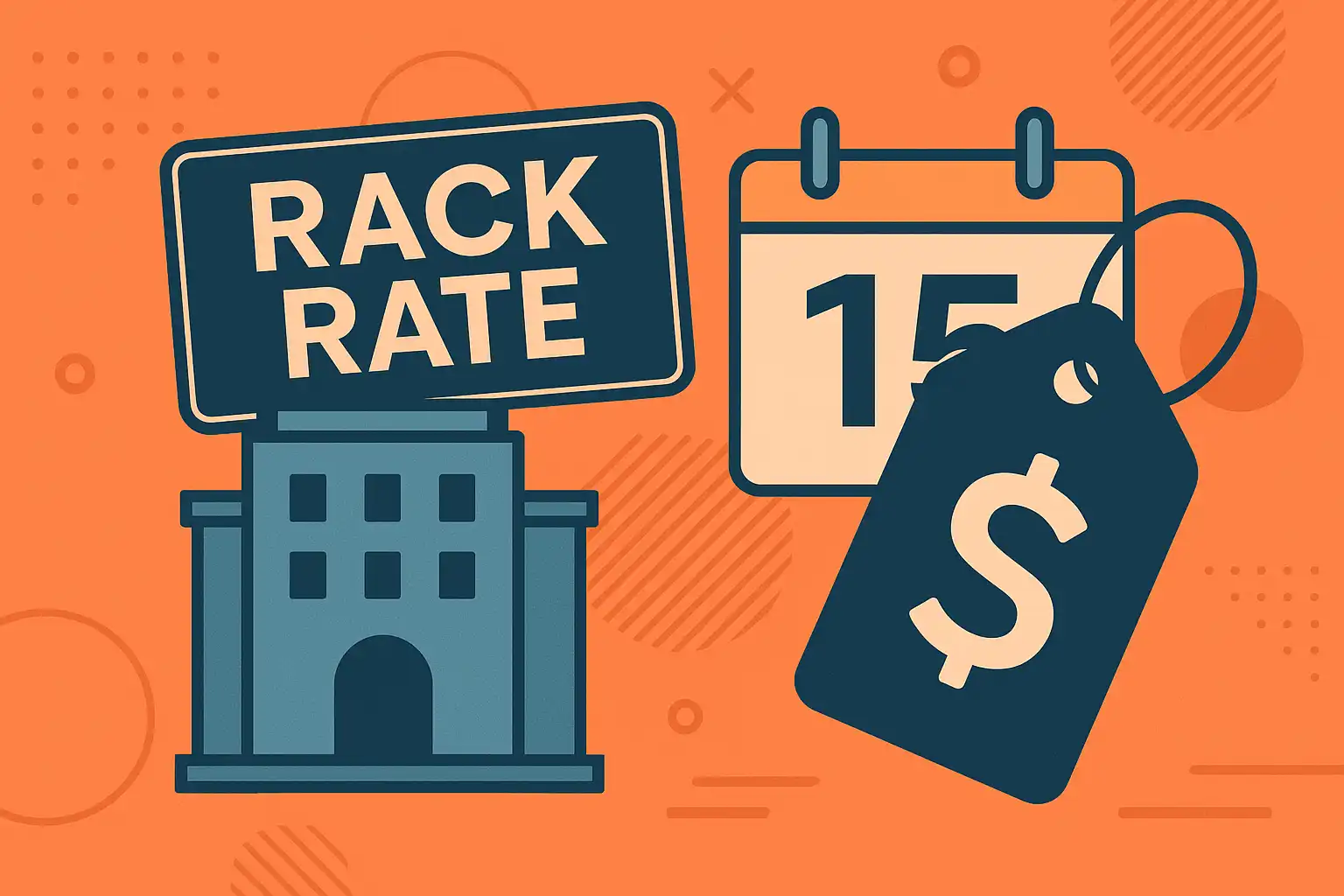What Are Rack Rates in Hotels: Definition, Examples & Importance
Oct 8, 2025
 Mika Takahashi
Mika TakahashiPopular Categories
Hotel Technology & InnovationHotel Operations OptimizationDigital MarketingIndustry TrendsRevenue ManagementHospitality Industry
Popular Categories
Trending Post

Hotel Walk Letter Template: Professional Guest Communication

Online Travel Agents: What They Are and How They Work

Hotel Security Systems: Modern Protection Solutions

Hotel Advertising: Complete Guide to Boost Bookings and Revenue

25 Hotel Marketing Strategy Ideas for 2025: Complete Guide

AI Reservation Agent: Revolutionizing Hotel Booking and Guest Experience

PMS Communication: Streamlining Property Management Through Effective Guest Messaging
Table of contents
Understanding what rack rate means in hotels is key to mastering revenue management. Even with all the fancy dynamic pricing and advanced booking platforms out there, rack rates still hold a crucial place in how hotels set their prices and communicate with guests.
In today’s competitive hospitality world, where pricing can make or break a hotel’s success, getting a handle on rack rates is a must for hotel managers, revenue teams, and owners alike. This guide will walk you through everything about hotel rack rates—from how they’re calculated to how you can use them smartly.
What is Rack Rate in Hotels
Simply put, the rack rate is the highest published standard price for a hotel room before any discounts, promotions, or loyalty perks kick in. It’s the official baseline price hotels use across all their booking channels and platforms.
You might also hear it called the walk-in rate, retail rate, or standard rate. Unlike dynamic pricing that changes with demand, hotel rack rates stay pretty steady and act as the anchor for all other pricing decisions.
Hotels usually show these rates on their websites, plug them into their property management systems, and use them in corporate proposals as the official room price. In some places, they’re even required by law to display these rates clearly, like on guestroom doors or at the front desk.
Hotel rack rates are important because they set the perceived value of a hotel stay. When guests see discounted or loyalty rates, they can easily see how much they’re saving compared to the rack rate. This helps build trust and encourages people to book directly with the hotel.

How Hotel Rack Rates are Calculated
Calculating rack rates is pretty straightforward. It starts with figuring out your costs and adding your desired profit margin. The basic formula looks like this: Cost per Room + (Cost per Room × Desired Profit Margin) = Rack Rate.
For example, imagine a cozy B&B with $80,000 in yearly costs, 5 rooms, and a goal of 20% profit. You’d divide $80,000 by 5 rooms, which is $16,000 per room per year. Add 20% profit on top, and that’s $19,200 per room annually. Divide that by 365 days, and you get roughly $53 per night.
But it’s not just about costs. Revenue managers also look at what competitors are charging, where their hotel fits in the market, the features of each room, and local demand throughout the year. Independent hotels might have more freedom setting rates, while chains often stick to brand standards for consistency.
Market conditions matter a lot too. Hotels in busy areas or during big events might set higher hotel rack rates, while those in competitive markets might keep prices more conservative to stay attractive.
Rack Rate vs Other Hotel Pricing Terms
Knowing how rack rate stacks up against other hotel pricing terms is important for making smart revenue decisions. Hotels use a variety of pricing terms, each with its own role.
Rack Rate vs BAR (Best Available Rate)
In 2025, most revenue pros use hotel rack rate and BAR (Best Available Rate) almost interchangeably. The small difference is that BAR sometimes includes discounts for loyalty members, while rack rate is usually the highest standard price without any discounts.
Both are the highest standard rates guests can expect, with the main difference showing up in loyalty program pricing. For example, a hotel might list a $200 rack rate but offer a $180 BAR rate to loyalty members who book directly.
Most in the industry agree these terms mean roughly the same thing for everyday pricing and revenue management. Which one you use often comes down to your hotel’s own language and how you talk to different sales channels.
Rack Rate vs Dynamic Pricing
Rack rate and dynamic pricing work hand-in-hand. The rack rate is your steady, fixed price foundation, while dynamic pricing adjusts rates in real time based on demand, competition, and booking trends.
Think of the rack rate as a ceiling or anchor. For instance, if your hotel rack rate is $200, your dynamic pricing might fluctuate between $120 and $180 depending on occupancy and market conditions. This way, you never go above your published maximum but can still maximize revenue.
This combo keeps pricing consistent and trustworthy for guests, while letting hotels capitalize on busy times and attract guests when things slow down.
How Hotels Determine Their Rack Rates
Hotels decide on rack rates through both manual and automated approaches, depending on their size, tech, and management style. Usually, revenue teams, hotel managers, or owners collaborate to analyze market data and set competitive prices.
Manual Rack Rate Setting
Manual rate setting means managers regularly review market data to make pricing calls. They look at competitor rates, booking trends, historical performance, and last-minute booking patterns.
Revenue managers often “rate shop,” checking how similar hotels price rooms at different times. They also dig into past data to spot trends and adjust rates accordingly.
This hands-on approach can mean multiple rate updates per day based on bookings and guest feedback. Smaller hotels or those facing special events often prefer this method for its flexibility.
Automated Dynamic Rack Rate Management
On the tech side, many hotels use advanced revenue management systems that automatically push optimal rates to property management systems. These tools analyze tons of data—competitor prices, booking speed, seasonal trends—and make instant rate changes across all channels.
Managers set rules like max and min prices or occupancy thresholds. For example, the system might only tweak rates if occupancy dips below 80%, keeping prices steady during busy times but optimizing revenue when things slow.
Best Practices for Setting Effective Rack Rates
Nailing rack rate management means balancing profit with staying competitive. Hotels that get this right often enjoy better revenue and stronger market positions.
Analyze Historical Performance Data
Regularly reviewing past data is key. Managers should look at average daily rate (ADR), revenue per available room (RevPAR), and occupancy over the last year or two to spot opportunities.
This helps identify times when demand was high but rates were too low, so hotels can adjust rack rates to capture more value during busy seasons without scaring off guests during slow times.
Combining performance reports with forecasting tools helps hotels plan smarter rate changes and hit revenue goals.
Monitor Competitor Pricing Strategies
Keeping an eye on what competitors charge is a must. Managers should do weekly rate checks, especially during slow seasons when guests are more price-sensitive.
Understanding competitors helps avoid losing business to cheaper hotels and reveals chances to grab market share.
Tools that ensure rate parity across channels help keep prices consistent and avoid confusing guests or upsetting booking platforms.
Leverage Rack Rates for Loyalty Programs
Using rack rates alongside hotel loyalty discounts is a smart move. Displaying member rates next to the full rack rate on your site shows clear savings, encouraging signups and direct bookings.
For example, showing a $200 hotel rack rate with a $170 member rate makes the value obvious and motivates guests to join your program.
Collecting guest info during signups also lets hotels send targeted marketing and build long-term relationships.

Why Hotels Still Use Rack Rates in 2025
Even with the rise of dynamic pricing, rack rates remain essential for many reasons beyond just setting prices.
Walk-in and Last-Minute Booking Management
Rack rates give front desk staff a clear fallback price for unexpected arrivals. Travelers with delayed flights or last-minute plans often need a room fast, and having a standard rate makes the process smooth and transparent.
About 28% of hotel bookings still happen offline, so having a consistent walk-in price is practical and profitable.
This approach ensures last-minute guests get fair pricing and hotels don’t leave money on the table.
Corporate and Wholesale Partnerships
Rack rates are the starting point for negotiating group booking discounts and corporate deals, which often come with 10-25% off the published rate.
Travel management companies rely on rack rates for budget planning and policy compliance.
Online travel agencies and wholesalers use rack rates to calculate commissions and show guests how much they’re saving.
Without a standard rack rate, maintaining fair partnerships and clear pricing would be tough.
Brand Positioning and Market Perception
Rack rates also help communicate where a hotel fits in the market. Luxury hotels might have rack rates of $400-$800+, while budget spots stay under $150, signaling their target guests.
These rates shape guest expectations about service and quality, helping hotels attract the right clientele.
Marketing often highlights rack rates to show savings and create value, like “Save 30% off our standard $250 rate.”
Technology and Rack Rate Management
Modern property management systems and revenue tools have made managing rack rates across channels easier and more precise.
Property Management System Integration
Today’s systems let hotels set rack rates by room type, season, and day, then automatically distribute those rates to OTAs, GDS, and direct booking sites.
Real-time updates prevent pricing mismatches that confuse guests or hurt credibility.
Scheduling seasonal changes in advance helps hotels plan for busy times and special events without last-minute scrambling.
Channel Manager Coordination
Channel managers keep rack rates consistent across Booking.com, Expedia, hotel websites, and more, avoiding rate parity issues.
They also let hotels run promotions on specific platforms while keeping base rack rates steady everywhere else.
This tech helps hotels maximize revenue while keeping good relationships with booking platforms.
Mastering rack rate management today means blending traditional pricing wisdom with modern technology. Hotels that do this well boost revenue, build guest trust, and maintain strong partnerships.
Rack rates remain a powerful tool, helping hotels simplify pricing, strengthen their brand, and stay competitive in a fast-changing market.
For hotels wanting to up their revenue game, reviewing and refining rack rate strategies is a great place to start. The right approach and tools can turn rack rates from just numbers into key drivers of long-term success.
